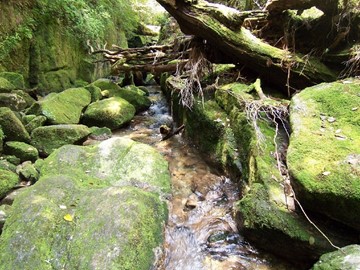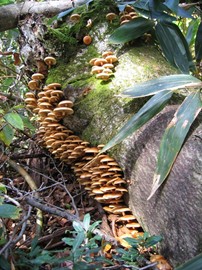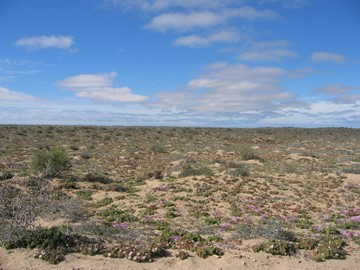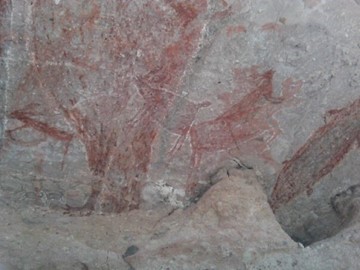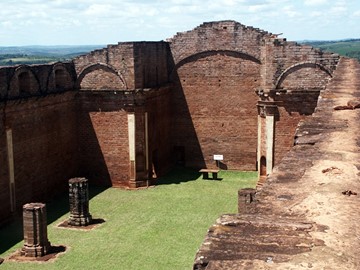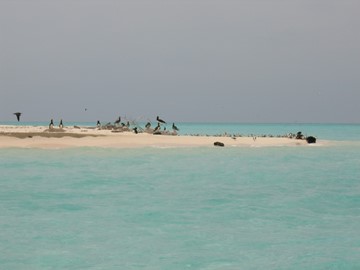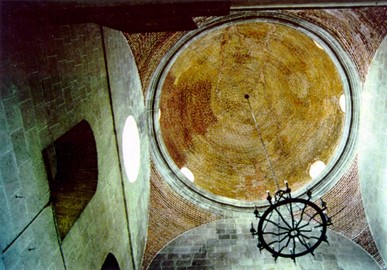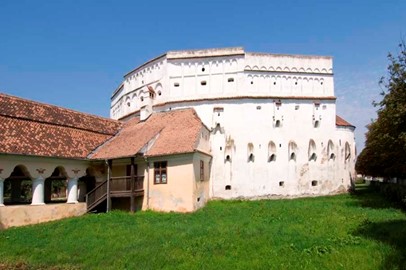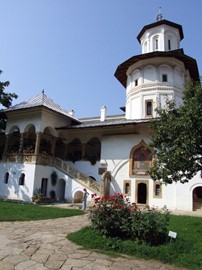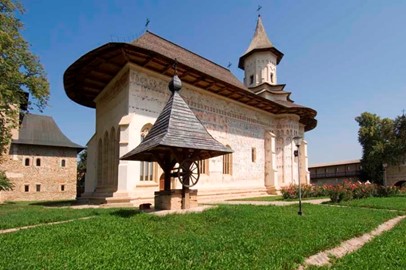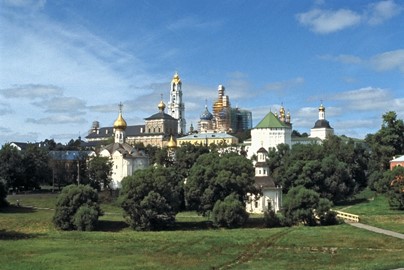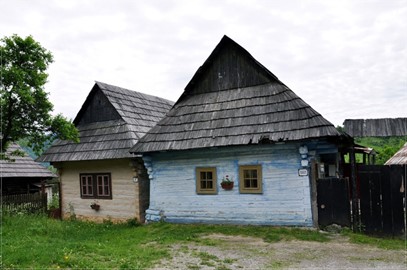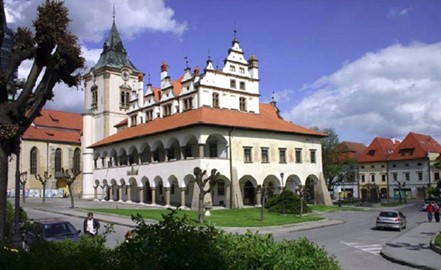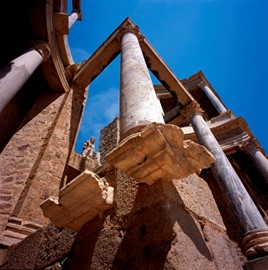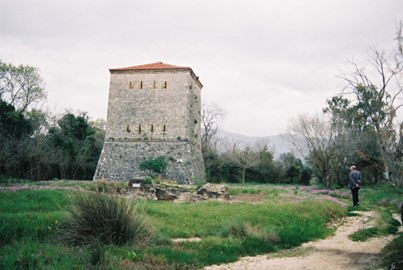search
Yakushima
Yakushima, a UNESCO World Heritage site in Japan, is renowned for its ancient cedar forests and unique subtropical ecosystem. This lush island features towering, moss-covered trees, some over 1,000 years old, thriving in a rugged, mountainous landscape. Its exceptional biodiversity and natural beauty, including rare flora and fauna, highlight its global significance as a pristine ecological treasure.
Shirakami Sanchi
Shirakami-Sanchi, a UNESCO World Heritage site in Japan, is a pristine expanse of ancient beech forest renowned for its rich biodiversity and untouched natural beauty. This mountainous region harbors a diverse ecosystem, including rare species like the Japanese black bear and the golden eagle, thriving amid dense woodlands. Its cultural and ecological value lies in its representation of the last remaining virgin beech forests in East Asia, offering a window into the region's natural heritage.
Whale Sanctuary of El Vizcaino
The Whale Sanctuary of El Vizcaino, a UNESCO World Heritage site in Mexico, is a vital natural habitat featuring two coastal lagoons that serve as key breeding and wintering grounds for the gray whale, alongside other marine species like California sea lions, northern elephant seals, and endangered sea turtles. Recognized in 1993, it supports a diverse ecosystem of wetlands, marshes, mangroves, and desert landscapes, fostering rich biodiversity including migratory birds and fish nurseries. This sanctuary ha... Read More
Zacatecas
The Historic Centre of Zacatecas, a UNESCO World Heritage site in Mexico, is renowned for its well-preserved colonial architecture and rich history rooted in silver mining. Established in the 16th century, the city features striking pink stone buildings, ornate churches like the Zacatecas Cathedral, and a unique urban layout shaped by its mountainous terrain. Its cultural significance and historical charm make it a standout example of Spanish colonial influence in the Americas.
Rock Paintings of the Sierra de San Francisco
The Rock Paintings of the Sierra de San Francisco, a UNESCO World Heritage site, feature prehistoric art created by the indigenous Cochimi people. Dating back thousands of years, these well-preserved murals depict humans, animals, and abstract forms in vibrant red, black, and white hues, offering insight into ancient cultural and spiritual practices. Discovered in a remote desert region, the site includes hundreds of caves and rock shelters, recognized for their historical and archaeological significance.
Jesuit Missions of Paraná and Tavarangue
The Jesuit Missions of La Santísima Trinidad de Paraná and Jesús de Tavarangue, located in Paraguay, are a UNESCO World Heritage site recognized in 1993 for their historical and cultural significance. These 17th- and 18th-century missions, founded by Jesuit missionaries, blended European Baroque architecture with indigenous Guaraní craftsmanship, creating a unique cultural fusion. The well-preserved ruins, including grand churches and communal spaces, reflect the Jesuits’ efforts to integrate and educate th... Read More
Tubbataha Reefs
Tubbataha Reefs Natural Park, a UNESCO World Heritage site in the Philippines, is a pristine marine sanctuary renowned for its exceptional biodiversity. Located in the Sulu Sea, it features vibrant coral reefs, diverse marine species, and serves as a critical habitat for endangered sea turtles and seabirds. This protected area is a globally recognized gem, attracting researchers and divers to its rich underwater ecosystem.
Baroque Churches
The Baroque Churches of the Philippines, recognized as a UNESCO World Heritage site, exemplify a unique fusion of European Baroque architecture and local Filipino craftsmanship. Constructed between the 16th and 18th centuries during Spanish colonial rule, these churches feature robust stone structures designed to withstand earthquakes, adorned with intricate carvings and ornate interiors. They stand as significant cultural and historical landmarks, reflecting the spread of Christianity and the architectural... Read More
Fortified Churches in Transylvania
The Fortified Churches in Transylvania, a UNESCO World Heritage site, are a remarkable collection of medieval structures built between the 13th and 16th centuries by Saxon communities. These churches, often surrounded by defensive walls and towers, served as both religious sanctuaries and strongholds against invasions, reflecting a unique blend of Gothic, Romanesque, and local architectural styles. Many feature well-preserved interiors with historic frescoes, altars, and wooden galleries, offering insight i... Read More
Monastery of Horezu
The Monastery of Horezu, a UNESCO World Heritage site in Romania, is a masterpiece of Brâncovenesc architecture founded in 1690 by Prince Constantin Brâncoveanu. Renowned for its intricate frescoes, ornate stone carvings, and well-preserved monastic complex, it serves as a significant cultural and religious landmark. The monastery’s scriptorium also played a key role in preserving Romanian Orthodox traditions and manuscripts. Today, it stands as a testament to Romania’s rich heritage and artistic legacy.
Churches of Moldavia
The Churches of Moldavia, a UNESCO World Heritage site in Romania, are renowned for their unique 15th and 16th-century architecture and vibrant exterior frescoes. These eight Orthodox churches, built under the patronage of Stephen the Great and his successors, blend Byzantine influences with local Gothic and Renaissance elements, showcasing exceptional artistry. Their well-preserved wall paintings, depicting biblical scenes and saints, are considered masterpieces of Eastern Orthodox religious art and draw v... Read More
Trinity Sergius Lavra
Trinity Sergius Lavra, a UNESCO World Heritage site in Russia, is a prominent Orthodox monastery founded in the 14th century by St. Sergius of Radonezh, a key figure in Russian monasticism. Renowned for its spiritual significance and architectural grandeur, it features a complex of historic buildings, including the Trinity Cathedral with its ancient frescoes and the imposing Assumption Cathedral. The site has long served as a center of religious life, education, and pilgrimage, reflecting centuries of Russi... Read More
Banska Stiavnica
Banska Stiavnica, a UNESCO World Heritage site in Slovakia, is a well-preserved medieval mining town renowned for its historical and cultural significance. Established in the 13th century, it became a prominent center for gold and silver mining, driving innovations in mining technology and education, including the founding of one of the world’s first technical universities in 1762. The town features a picturesque ensemble of Gothic and Baroque architecture, with highlights like the Old Castle, Trinity Squar... Read More
Vlkolinec
Vlkolínec, a UNESCO World Heritage site in Slovakia, is a remarkably well-preserved traditional village showcasing Central European folk architecture. Its 45 log houses, built with techniques typical of mountainous regions, remain largely unchanged since medieval times, offering a rare glimpse into rural life. The settlement includes a distinctive wooden bell tower from 1770 and a Baroque-Classical church, reflecting its historical and cultural significance. Still inhabited today, Vlkolínec stands as a livi... Read More
Levoca and Spissky Hrad
Levoča and Spišský Hrad, a UNESCO World Heritage site in Slovakia, represent a well-preserved medieval ensemble. Levoča, a historic town, features Gothic and Renaissance architecture, including the striking St. James’ Church with its renowned wooden altar by Master Pavol. Nearby, Spišský Hrad, one of Central Europe’s largest castle complexes, showcases Romanesque and Gothic elements, reflecting its strategic importance since the 12th century. Together, they highlight Slovakia’s rich cultural and historical ... Read More
Mérida
The Archaeological Ensemble of Mérida, a UNESCO World Heritage site in Spain, showcases an impressive collection of Roman ruins from the ancient city of Emerita Augusta, founded in 25 BC. This well-preserved site includes a grand theater, amphitheater, temples, aqueducts, and bridges, reflecting the architectural and engineering prowess of the Roman Empire. It offers a glimpse into the daily life, culture, and governance of a provincial Roman capital, making it a significant historical and archaeological tr... Read More
Santa María de Guadalupe
The Royal Monastery of Santa María de Guadalupe, a UNESCO World Heritage site in Spain, is a historic architectural complex renowned for its cultural and religious significance. Founded in the 13th century, it blends Gothic, Mudéjar, Renaissance, and Baroque styles, reflecting centuries of artistic evolution. The monastery is celebrated for housing the revered statue of the Virgin of Guadalupe, a key symbol in Spanish history and Catholicism. Its well-preserved cloisters, church, and museum make it a remark... Read More
Routes of Santiago de Compostela: Camino Francés and Northern Spain
The Routes of Santiago de Compostela, recognized as a UNESCO World Heritage site, encompass the Camino Francés and other historic pilgrimage paths leading to the shrine of St. James in Santiago de Compostela. These routes, traveled by pilgrims since the Middle Ages, are celebrated for their cultural and historical significance, featuring a network of trails dotted with churches, monasteries, and hostels. The Camino Francés, the most famous route, highlights the architectural and spiritual legacy of this end... Read More
Birka and Hovgarden
Birka and Hovgården, a UNESCO World Heritage site in Sweden, form a remarkable archaeological complex showcasing the Viking Age's extensive trading networks across Europe. Located on two neighboring islands in Lake Mälaren, Birka was a bustling mercantile town from the 8th to 10th centuries, known for its role as a key trading hub and the site of Sweden’s first Christian congregation, founded in 831 by St. Ansgar. Hovgården, the nearby royal estate, governed the region and features monumental mounds, a rune... Read More
Engelsberg Ironworks
Engelsberg Ironworks, a UNESCO World Heritage site in Sweden, is a remarkably preserved industrial complex established in 1681. It became one of the world’s most advanced ironworks between 1700 and 1800, producing high-quality iron that solidified Sweden’s leadership in the industry during the 17th and 18th centuries. The site features intact buildings, including a blast furnace, forge, and workers’ residences, showcasing historical technology and architecture. Operations ceased in 1919, and it was designat... Read More
Bukhara
The Historic Centre of Bukhara, a UNESCO World Heritage site in Uzbekistan, is a remarkably well-preserved example of a Central Asian Islamic city, showcasing over a thousand years of history. Its architectural treasures include the ancient Ark Fortress, the intricately designed Kalon Minaret, and numerous mosques, madrasas, and mausoleums reflecting the city’s role as a major Silk Road hub. This living museum highlights Bukhara’s cultural and religious significance, with its traditional bazaars and labyrin... Read More
Coro
Coro and its Port, located in northwestern Venezuela, is a UNESCO World Heritage site recognized for its unique earthen architecture and historical significance. Founded in 1527, it showcases a remarkable blend of local traditions with Spanish Mudéjar and Dutch architectural techniques, evident in its well-preserved colonial buildings and original street layout. As one of the first colonial towns in Latin America, it served as Venezuela’s initial capital and the continent’s first bishopric. Since 2005, it h... Read More
Hué
The Complex of Hué Monuments, a UNESCO World Heritage Site in Vietnam, showcases the grandeur of the Nguyen Dynasty, which ruled from 1802 to 1945. This historic ensemble includes the fortified Citadel, the Imperial City, and the Forbidden Purple City, along with royal tombs, temples, and pagodas, all harmoniously integrated with the natural landscape. Recognized in 1993, it exemplifies eastern feudal architecture and urban planning, reflecting Vietnam’s rich cultural and political heritage. Despite wartime... Read More
Zabid
The Historic Town of Zabid, a UNESCO World Heritage Site in Yemen, is renowned for its exceptional domestic and military architecture, reflecting its significance as a political and cultural hub from the 13th to 15th centuries. Once a thriving center of Islamic learning, it boasts the highest concentration of mosques in Yemen, including the prominent Great Mosque, alongside vestiges of its historic university. Designated in 1993, Zabid was added to the List of World Heritage in Danger in 2000 due to deterio... Read More
Butrint
Butrint, a UNESCO World Heritage site in Albania, recognized in 1992 with expansions in 1999 and 2007, is an ancient city tracing 2,500 years of history from Greek colonization to Ottoman rule. Nestled in a lush lagoon, its ruins—featuring a theater, basilica, and Venetian fortress—reflect a blend of Mediterranean cultures amid a biodiverse wetland. This well-preserved site showcases Albania’s archaeological richness, offering a layered testament to its enduring historical significance.
